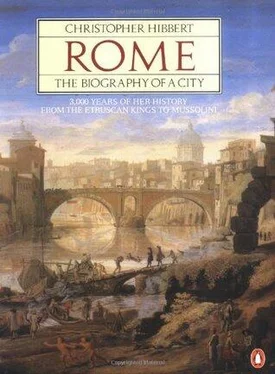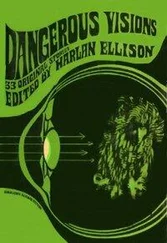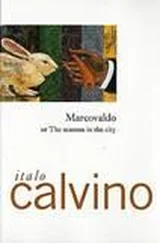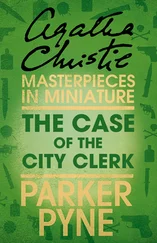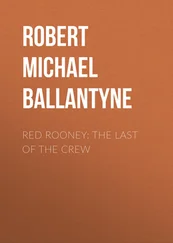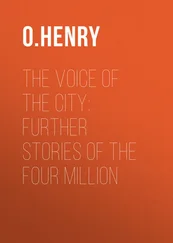Christopher Hibbert - Rome. The Biography of the City
Здесь есть возможность читать онлайн «Christopher Hibbert - Rome. The Biography of the City» весь текст электронной книги совершенно бесплатно (целиком полную версию без сокращений). В некоторых случаях можно слушать аудио, скачать через торрент в формате fb2 и присутствует краткое содержание. Жанр: Культурология, Искусство и Дизайн, на английском языке. Описание произведения, (предисловие) а так же отзывы посетителей доступны на портале библиотеки ЛибКат.
- Название:Rome. The Biography of the City
- Автор:
- Жанр:
- Год:неизвестен
- ISBN:нет данных
- Рейтинг книги:3 / 5. Голосов: 1
-
Избранное:Добавить в избранное
- Отзывы:
-
Ваша оценка:
- 60
- 1
- 2
- 3
- 4
- 5
Rome. The Biography of the City: краткое содержание, описание и аннотация
Предлагаем к чтению аннотацию, описание, краткое содержание или предисловие (зависит от того, что написал сам автор книги «Rome. The Biography of the City»). Если вы не нашли необходимую информацию о книге — напишите в комментариях, мы постараемся отыскать её.
Rome. The Biography of the City — читать онлайн бесплатно полную книгу (весь текст) целиком
Ниже представлен текст книги, разбитый по страницам. Система сохранения места последней прочитанной страницы, позволяет с удобством читать онлайн бесплатно книгу «Rome. The Biography of the City», без необходимости каждый раз заново искать на чём Вы остановились. Поставьте закладку, и сможете в любой момент перейти на страницу, на которой закончили чтение.
Интервал:
Закладка:
11. The PALAZZO SFORZA-CESARINI was built by Cardinal Rodrigo Borgia, later Alexander VI, in about 1462 on the site of the old papal cancelleria . It was here that the cardinal held some of his most lavish entertainments. It was rumoured that Borgia ceded it to Cardinal Ascanio Sforza as the price of his vote in the papal election. It was later acquired by the Cesarini family. The palace was completely rebuilt in 1888 to the designs of Pio Piacentini who retained one side of the fifteenth-century courtyard with its portico and loggia.
12. The TOR DI NONA was once part of an Orsini fortification which commanded the ferry crossing over the Tiber upstream of the present Ponte Umberto. For long a prison with a fearsome reputation, it was here that Benvenuto Cellini was held as well as Giordano Bruno.
13. The PALAZZO GIRAUD-TORLONIA in the Via della Conciliazione was built in 1496–1504 by Andrea Bregno for Cardinal Adriano Castellesi da Corneto, papal nuncio in England and a friend of Henry VII. It became the residence of Henry VIII's ambassadors to the Holy See until the Reformation when it passed to the Giraud family and then to the Torlonias, the papal bankers.
14. Along the left bank of the Tiber, at the level of the Ponte Cavour which was built in 1901, was the site of the second main port on the river now marked by the Piazza Porto di Ripetta. Possibly in existence in classical Roman times, the RIPETTA served traffic going down river and was in use until the late nineteenth century. It was built or rebuilt during the early Renaissance with large blocks of travertine which had fallen off the COLOSSEUM during the great earthquake of 1349.
15. The apartment in the VATICAN which Pope Alexander VI prepared for his own use lies below the STANZE OF RAPHAEL in the part of the Vatican Palace built by Pope Nicholas V (1447–55) and partly in the tower which Alexander himself erected. These buildings are now at the south end of the CORTILE DEL BELVEDERE, which did not exist in Pope Alexander's time, and separate this court from the much smaller Cortile dei Pappagalli. The BORGIA APARTMENT consists of six rooms of different sizes on the first floor decorated by various artists. The superb frescos of Pinturicchio were painted between 1492 and 1495. In the fourth room, the Sala dei Santi, which contains some of Pinturicchio's finest work, the lives of St Paul the Hermit and St Catherine of Alexandria are portrayed, Lucrezia probably having served as a model for St Catherine. On 29 June 1500 Alexander VI was nearly killed when the ceiling of the sixth and largest room, the Sala dei Pontefici, collapsed. It was restored by Pope Leo X and decorated with stuccoes and frescos by Giovanni da Udine and Perin del Vaga. The apartment was used for a period to house the Vatican picture collection and then the printed books of the VATICAN LIBRARY.
9. PATRONS AND PARASITES
1. PASQUINO, the headless marble Greek torso of the third century B.C., which is said to represent Menelaus, stands on the pavement in a small triangular square, the Piazza di Pasquino, outside PALAZZO BRASCHI. It was placed here by Cardinal Carafa in 1501 after being unearthed during the repaving of the nearby Via dei Leutari. The popular pastime of attaching labels to the statue with critical and pungent comments on the activities of those in authority seems to have derived, together with the name, from a fifteenth-century tailor called Pasquino who worked in the neighbourhood, frequently for the papal court, about whose doings he commented with unusual freedom and vehemence. The statue itself was, however, first used for the purpose of protest during the reign of Alexander VI. Pasquino is only one of a number of ancient talking statues which the people of Rome have made the spokesmen of their complaints. Among the others are Marforio, a recumbent statue of Ocean in the courtyard of the CAPITOLINE MUSEUM; Madama Lucrezia, a copious female bust, possibly of Faustina, attached to the wall of PALAZZETTO VENEZIA and perhaps named after the sixteenth-century owner of some nearby houses, whose physical attributes resembled those of the statue; Abate Luigi, a late classical figure in a toga, to be found in the Piazza Vidoni off the Corso V. Emanuele; the Fontanella del Facchino, a fountain alongside the church of S. MARIA IN VIA LATA which portrays a sixteenth-century water-carrier.
The comments of Pasquino have given a new word to many languages. Pasquinade entered the English language in 1658. An example of a pasquinade is given in translation in Rennell Rodd's Rome . It relates to the liberal distribution in Rome of Legion of Honour crosses to Roman collaborators by the Napoleonic administration:
In fierce old times they balanced loss
By hanging thieves upon a cross,
But our humaner age believes
In hanging crosses on the thieves.
2. The church of S. PIETRO IN MONTORIO was originally built on the Janiculan hill before the ninth century in the place where it was wrongly supposed that St Peter had suffered martyrdom. It was rebuilt, perhaps to designs by Baccio Pontelli, soon after 1481 on the order of Ferdinand and Isabella of Spain. In 1849 it was badly damaged during the fighting between Garibaldi's forces and the French, and was restored soon afterwards. The Tempietto was built in a small courtyard to the right of the church to mark what was still at that time supposed to be the exact spot upon which St Peter was crucified.
3. An inscription on the ARCO DEI BANCHI records the height of a flood of the Tiber in 1276. When the river overflowed its banks near the Ponte Sant' Angelo in the Middle Ages the waters cascaded down the Via del Banco di S. Spirito and its continuation, the Via dei Banchi Novi, which was consequently then known as Canale di Ponte.
4. As well as the ARCO DEI BANCHI, the VIA DEL BANCO DI S. SPIRITO contains the PALAZZO NICCOLINI-AMICI built in the 1530s by Jacopo Sansovino for Roberto Strozzi, and the PALAZZO ALBERINI, later the PALAZZO CICCIAPORCI (see note 3, Chapter 10).
5. The VATICAN GARDENS OF JULIUS II, as laid out by Bramante, were described by an English traveller in 1549 as ‘the goodliest thing in the world'. They extended in a northerly direction from the existing buildings of the VATICAN PALACE, which were adjacent to ST PETER'S, to the BELVEDERE over three hundred yards up the slope of the Vatican hill where Pope Innocent VIII (1484–92) had decided to build a palazzetto for himself, well removed from the bustle of the papal palace and offices. The work was carried out by Jacopo da Pietrasanta, perhaps to designs by Pollaiuolo. Bramante planned to use the space between the PALAZZETTO DEL BELVEDERE and the Vatican offices for two long flanking buildings to enclose a large arena for tournaments and a garden. The work was never carried out as designed, though the east side of the enclosure was built and the garden, the GIARDINO DELLA PIGNA, laid out before the death of Julius II. Later, Sixtus V (1585–90) built the VATICAN LIBRARY across the enclosure, thus forming the CORTILE DEL BELVE-DERE and the CORTILE DELLA PIGNA. Later still another court, the CORTILE DELLA BIBLIOTECA, was created by the construction of another transverse wing, the Braccio Nuovo, designed by Raffaello Stern and completed in 1822. This was taken out of the space of the Cortile della Pigna. The core of the Belvedere Villa survives, but only as part of the buildings which enclose the Cortile della Pigna on the north side, in what is now the MUSEO PIO-CLEMENTINO, built by Pope Clement XIV (1769–74) and his successor, Pius VI (1775–99).
6. The APOLLO DEL BELVEDERE is now in the Gabinetto dell'Apollo in the MUSEO PIO-CLEMENTINO at the VATICAN. It is a copy of a Greek original by Leochares, probably in bronze, of the fourth century B.C. It was found in Grottaferrata towards the end of the fifteenth century and formed part of the collection of Pope Julius II when he was still a cardinal. It was placed by him in the garden of his palace and from there transported to the Belvedere garden when he became Pope.
Читать дальшеИнтервал:
Закладка:
Похожие книги на «Rome. The Biography of the City»
Представляем Вашему вниманию похожие книги на «Rome. The Biography of the City» списком для выбора. Мы отобрали схожую по названию и смыслу литературу в надежде предоставить читателям больше вариантов отыскать новые, интересные, ещё непрочитанные произведения.
Обсуждение, отзывы о книге «Rome. The Biography of the City» и просто собственные мнения читателей. Оставьте ваши комментарии, напишите, что Вы думаете о произведении, его смысле или главных героях. Укажите что конкретно понравилось, а что нет, и почему Вы так считаете.
